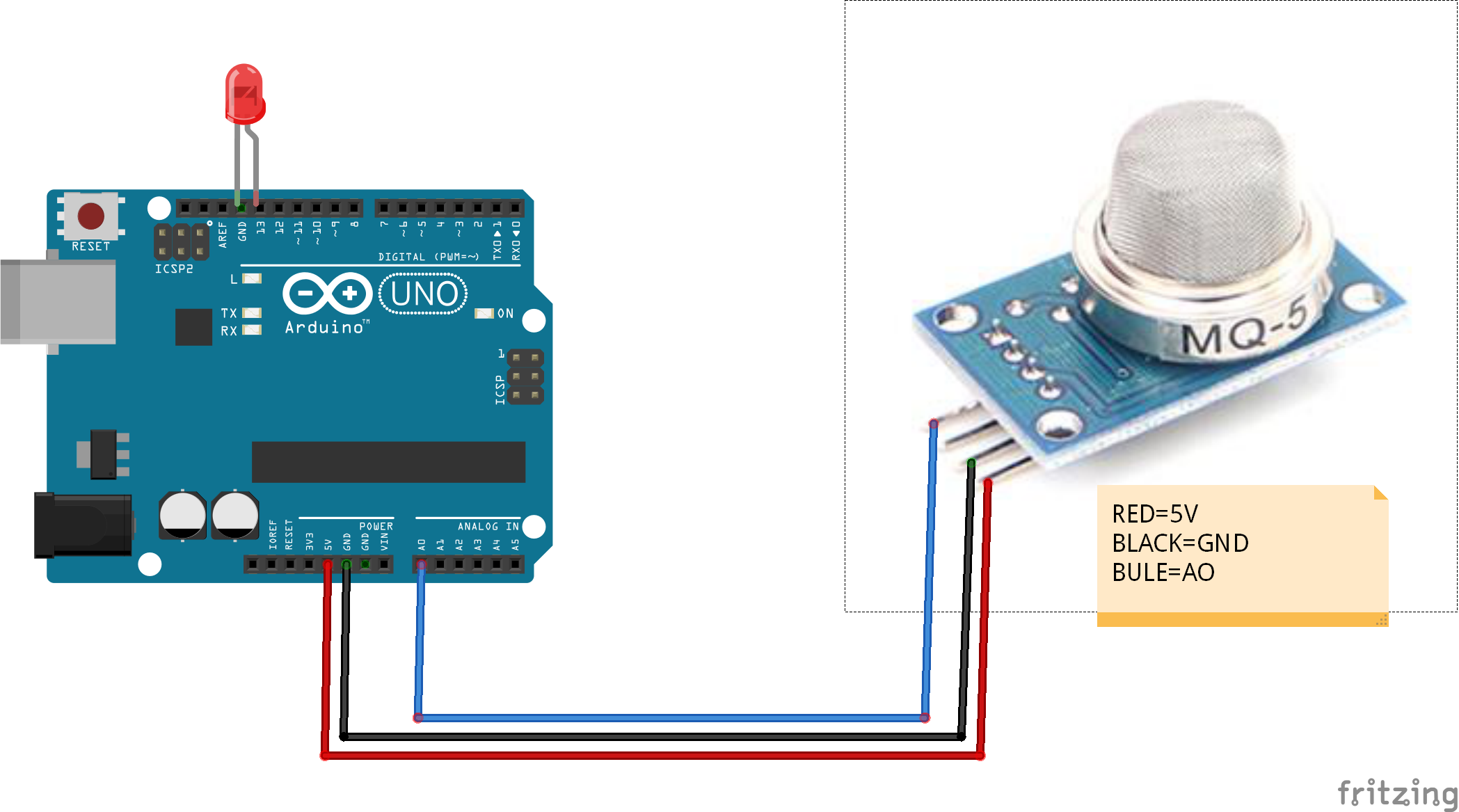








MQ5 GAS SENSOR MODULE
Gas Sensor(MQ5) module is useful for gas leakage detection (in home and industry). It is suitable for detecting H2, LPG, CH4, CO, Alcohol. Due to its high sensitivity and fast response time, measurements can be taken as soon as possible. The sensitivity of the sensor can be adjusted by using the potentiometer.
₹ 105 ₹149
149



| Made In : | India |
Add FAQ
The MQ5 gas sensor module is a type of metal oxide semiconductor (MOS) sensor designed for detecting various gases, including methane (CH4), liquefied petroleum gas (LPG), and carbon monoxide (CO). It is used in a range of applications such as gas leak detection, air quality monitoring, and environmental safety. Here’s a comprehensive overview of the MQ5 gas sensor module:
MQ5 Gas Sensor Module Overview:
1. Key Features:
-
Gas Detection:
- Primary Gases: Methane (CH4), Liquefied Petroleum Gas (LPG), and Carbon Monoxide (CO).
- Secondary Gases: The sensor may also respond to other combustible gases.
-
Heating Element:
- The sensor includes a heating element that maintains the temperature of the sensing material for accurate gas detection.
-
Analog Output:
- Provides an analog voltage output that varies with the concentration of the detected gases. This output can be used to measure gas levels.
-
Digital Output (Optional):
- Some MQ5 modules include a digital output that triggers when gas concentration exceeds a predefined threshold, useful for activating alarms or other control systems.
2. Working Principle:
-
Gas Detection:
- The MQ5 sensor uses a metal oxide semiconductor (MOS) material that changes its electrical resistance when exposed to gases. The change in resistance affects the analog output voltage.
-
Heating Process:
- A built-in heating element ensures the sensor operates at a stable temperature, which is necessary for reliable gas detection.
-
Output Signal:
- The analog output voltage from the sensor is proportional to the concentration of the gases detected. This voltage can be read by a microcontroller or analog-to-digital converter (ADC) to determine gas concentrations.
3. Circuit Connections:
-
Power Supply:
- VCC: Connect to a 5V power source.
- GND: Connect to ground.
-
Analog Output:
- A0: Connect the analog output pin to an analog input pin on a microcontroller or ADC to measure the concentration of gases.
-
Digital Output (if available):
- D0: Connect to a digital input pin on the microcontroller. This output can be used to trigger an alert or control system when gas concentrations exceed a set threshold.
-
Heater Control:
- The module may include additional pins for controlling the heater. Consult the datasheet for specific wiring instructions.
4. Applications:
-
Gas Leak Detection:
- Used in systems to detect leaks of methane, LPG, or CO, providing early warnings to prevent hazardous situations.
-
Air Quality Monitoring:
- Applied in systems that monitor air quality by detecting concentrations of combustible gases.
-
Environmental Safety:
- Employed in various safety systems to ensure safe levels of gases in residential or industrial environments.
-
Home Safety:
- Can be used in household safety devices to detect dangerous levels of gases.
5. Calibration:
-
Initial Calibration:
- Begin by exposing the sensor to clean air to establish a baseline for zero gas concentration.
-
Gas Concentration Calibration:
- For accurate measurements, calibrate the sensor with known concentrations of target gases (e.g., methane, LPG, CO). This involves creating a calibration curve to convert the sensor’s analog output into gas concentration values.
6. Advantages:
-
Versatility:
- Can detect multiple gases including methane, LPG, and CO, making it suitable for various applications.
-
Cost-Effective:
- Provides an affordable solution for detecting multiple gases and ensuring safety.
-
Ease of Integration:
- Simple to integrate with microcontrollers and development boards due to its analog and optional digital outputs.
7. Limitations:
-
Sensitivity to Interference:
- The sensor may respond to other gases or environmental factors, affecting accuracy. Proper calibration is essential for reliable results.
-
Warm-Up Time:
- Requires a warm-up period to stabilize and provide accurate readings.
-
Limited Lifespan:
- The sensing material can degrade over time, which may impact the sensor’s performance and accuracy.
8. Example Use Case:
Gas Leak Detection System:
- In a gas leak detection system, the MQ5 sensor can monitor the concentration of methane, LPG, or CO. If the sensor detects a gas concentration above a predefined threshold, the system can activate an alarm or take other safety actions to prevent potential hazards.
Summary:
The MQ5 gas sensor module is a versatile and cost-effective tool for detecting methane, LPG, and carbon monoxide. Its ability to detect multiple gases and ease of integration make it suitable for a wide range of applications in gas leak detection, air quality monitoring, and environmental safety. Proper calibration and understanding of the sensor's limitations are crucial for achieving accurate and reliable performance. For detailed specifications and connection instructions, refer to the datasheet specific to the MQ5 module.

0 Reviews For this Product












.jpg&width=225&quality=80)
